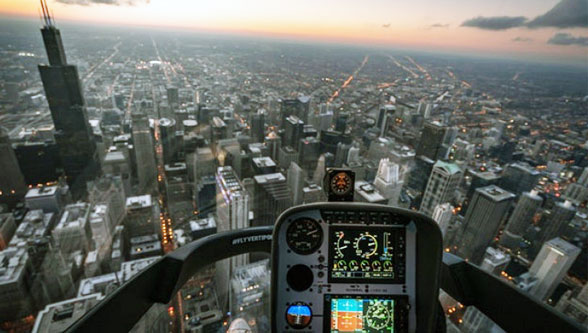In 2017, there were 609 thousand certified pilots, which seems a lot, but the number drastically declined from 827 thousand in 1980. And the number of qualified pilots is gradually decreasing. One way to tackle the problem is to accelerate an autonomous aircraft development. Even though the idea might sound intimidating at best, it’s not that far from happening.
Already now, most of the flights are operated from the land centers, and pilots only handle take-off, landing, and dangerous situations by putting directions to systems. Most of the time of a flight, a plane is on a self-flying mode. Tourism is booming, more people than ever are traveling around the world, yet there’s the scarcity of pilots.
In 2017, there were 609 thousand certified pilots, which seems a lot, but the number drastically declined from 827 thousand in 1980. And the number of qualified pilots is gradually decreasing.
One way to tackle the problem is to accelerate an autonomous aircraft development. Even though the idea might sound intimidating at best, it’s not that far from happening. Already now, most of the flights are operated from the land centers, and pilots only handle take-off, landing, and dangerous situations by putting directions to systems. Most of the time of a flight, a plane is on a self-flying mode.
However, the goal is not a self-flying plane but a fully autonomous aircraft.
What is an autonomous aircraft?
As we mentioned previously, most of the flights operate on autopilot. These self-flying systems carry out inputs received from land and pilots. It allows a plane to follow specific directions and even perform turns, climbs, and descents.
These systems do not only facilitate plane navigation for pilots but also increase safety measures, as there are fewer chances of human error or attempts to compromise the flight.
While self-flying airplanes still need pilots to enter actions and perform sensitive operations, autonomous air vehicles will have sensors to do that instead of humans. As airways are becoming busier, sensor-based aircraft could be a revolutionary solution for urban air mobility.
Autonomous planes will need to perform under risky conditions. To do that, they need three major functions: sensors, embedded software, and AI-based learning systems to recognize numerous possible scenarios. It has to reach an exceptional level of precision, as these systems have to learn to identify common hazards such as birds, storms, turbulence, and so
As futuristic as it sounds, two large aircraft manufacturing companies, Boeing and Airbus, have already started tests. In 2019, Boeing completed the first autonomous flight, the machine took off vertically, hovered, and then successfully landed.
It seems simple, but it took years of research to reach this milestone. In the same year, Airbus tried its pilotless plane Vahana and attained similar results.
Although there are only a few attempts, the future of autonomous aircraft seems promising.
The future of autonomous aircraft
Don’t worry; a self-flying plane doesn’t mean your flight will be unattended. There are going to be at least one supervising pilot. However, urban air mobility distinguishes with short distances, fast execution, and lightweight design, so these planes won’t be able to carry many people. Most of the flights are going to be designed for 10 to 14 people; therefore, a second pilot would only take up space.
Some other differences from current aircraft models would also include :
- Electric propulsion to keep urban emissions down
- Lightweight frames/loads to meet maneuverability and efficiency requirements
- Quiet mechanisms to keep urban noise to a minimum
- Comfortable experiences to break into the urban mobility market
- As you can see, the future of the aviation industry is not only autonomous, but also more secure and environmental-friendly.
Engineers have to overcome numerous obstacles
Designing such a mechanism is challenging. Integrated systems and sensors aren’t enough to ensure safety and error-free performance for self-operated aircraft. These systems have to be prepared and designed in a way to adapt to various meteorological and technical conditions.
Engineers have to outperform themselves, which is why advanced training software is more than crucial. ANSYS, as a leader in engineering software solutions, developed a platform to help engineers enhance their skills and build a simulation for vertical-takeoff-and-landing (VTOL) aircraft.
Read the original news here




